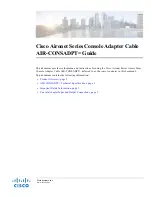
Installation Instruction
Danfoss Self-limiting Heating Cables
© Danfoss | FEC | 2019.02 | 15
088L8008 / VIAMQ502
GB
• Installation of ECpipeheat 10 (SLPH-10) in
pipes is energy-saving, because the heating
cable is in direct contact with the fluid that is
to be heated.
• Do not use the heating cable in pipes with
inletwater pressure above 1 MPa (10 bar).
Please note that in this case the heating cable
must be connected via a fault current relay
(RCD), and it must be possible to disconnect
the heating cable.
• Never
install the heating cable in taps and
valves.
• Never
switch on power, before the pipe is filled.
• If the heating cable is damaged during instal-
lation, it
must
be replaced.
• When the heating cable is installed in pipes,
the pipe or insulation should be clearly
marked with a warning.
WARNING!
230V AC HEATING CABLE
4.3
Installation Inside the Pipe
1.
Fit a T-shaped pipe of a generous size over the
pipe.
2.
Fit the wadding (the item with male thread)
inside the T-shaped pipe.
3.
Push the heating cable through the wadding,
using lubricant to facilitate the installation. The
connection between heating cable and con-
necting cable must be outside the wadding.
4.
Mount the Wadding in the following se-
quence:
• Mount the nut with the flat side facing
the connection.
• Mount the washer on the heating cable.
• Squeeze the rubber seal on the heating
cable.
5.
Mount the male threaded part with the female
threaded part facing the end of the cable.
6.
The heating cable must extended straight
through the T-shaped pipe.
7.
Turn the wadding until it fits tightly
8.
Insulate the pipe with at least 30 mm insula-
tion or more if required.
4.4
Installing on Roof and Gutters
To provide sufficient heat in gutters, the heat den-
sity and the number of cable lines, depends on the
design temperature and the gutter diameter.
1.
Roof edge / eave
2. Gutter
3.
Downpipe to frost-free well
4.
Gutter valley
5.
Flat roof with drain
6.
Roof with baffles
7.
Downpipe with open end
Summary of Contents for ECpipeguard 10
Page 2: ......






































